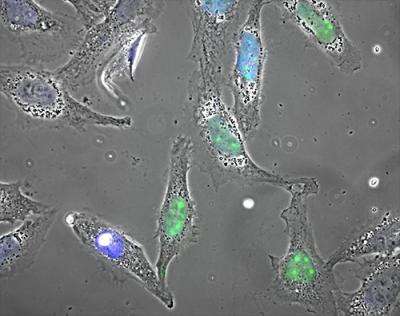Emergency alert in the cell: Scientists identify new mechanisms in the cellular stress response

When an organism is exposed to life-threatening conditions, it sounds the alarm and a cellular emergency program, the heat shock response, is initiated. However, the name "heat shock response" is misleading. In the beginning of the 1960s, this form of stress response was first observed. Scientists exposed fruit flies to high temperatures and discovered a complex emergency program designated to save single cells and thus the organism itself. Today researchers know that this program is also triggered by other dangers such as radiation or toxic substances. The terminology, however, is still in use.
During the heat shock response, different stress proteins are synthesized. Their task is to prevent permanent damage to the organism. "You can compare it to an emergency alert. In order to restore the original status as soon as possible, problems and damages are identified, counter-measures initiated and coordinated", Loew describes the processes in the cell. In a comprehensive analysis, the Max Planck scientists have investigated 15 000 proteins and their role in the heat shock response. They could show that the helpers are organized in different groups according to their tasks and disaster zones. One group of proteins, for instance, checks whether the DNA in the nucleus is still intact.
The protein HSF1 (short for heat shock transcription factor) is responsible for the central coordination of the disaster management. In the moment it is activated, it calls a variety of other proteins into action to eliminate the damages. The scientists could demonstrate two ways in which this control center in itself is regulated. When the crisis is overcome, HSF1 is degraded by the cell's waste disposal system, the proteasome. As long as there is still damage to get rid of, another protein (Acetyltransferase EP300) prevents the degradation.
The understanding of the heat shock response could also be of interest for neurodegenerative diseases such as Alzheimer's or Parkinson's, so the scientists in Martinsried hope. Typical for these diseases are massive cell damages and, thus, the excessive demand on the cellular quality control. Nerve cells die and cannot fulfill their tasks in the brain anymore. "A targeted activation of the heat shock response could reduce the disease specific cell damages," explains Loew.
Provided by Max Planck Society















